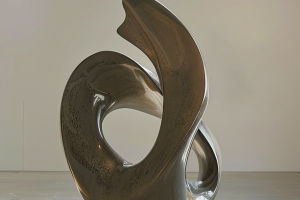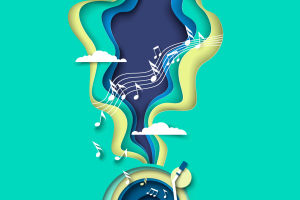Abstract art, at first glance, might look like random splashes of paint, scattered shapes, or wild colors with no real meaning.
But to stop there is to miss the entire point. Abstract art is not about copying the world literally — it's about expressing emotions, ideas, or even music and movement through forms that don't always resemble real-life objects.
In short, abstract art is art that breaks away from traditional representation and invites the viewer to explore deeper meanings beyond the surface.
A Brief History of Abstraction
The roots of abstract art trace back to the early 20th century, when artists like Wassily Kandinsky, Kazimir Malevich, and Piet Mondrian began experimenting with forms and colors that didn't directly reflect what they saw in reality. Kandinsky, often credited as one of the pioneers of abstract art, believed that color and form had the power to evoke emotion in the same way music does. He once wrote, "Color is a power which directly influences the soul." Abstract art emerged as a response to the changing world — a world marked by industrialization, new technologies, and shifting cultural values. These artists weren't simply doodling; they were creating a new visual language.
Intention Over Randomness
One of the biggest misconceptions about abstract art is that it's random or easy to create. In reality, abstract artists often plan their compositions very carefully. They choose specific colors to evoke mood, organize shapes to guide the eye, and use scale and texture for balance and emphasis.
Just because something doesn't look realistic doesn't mean it lacks intention. In fact, some abstract artists spend days or even weeks on a single piece, refining every brushstroke until it feels right.
The Language of Shapes and Colors
Imagine colors and shapes as a language — one that doesn't rely on words but on visual cues. In abstract art, a red triangle might represent energy or aggression, while a soft blue circle could suggest calm or harmony. These interpretations aren't always fixed, and that's part of the magic.
The artist offers a suggestion, and the viewer brings their own experiences to the interpretation. This interaction between artist and audience is one of the most powerful features of abstract art.
Emotion, Not Representation
Abstract art often focuses on feeling rather than form. Where a traditional painting of a storm shows wind and rain, an abstract painting might use jagged lines and deep grays to communicate the emotional intensity of the storm instead.
This gives abstract art a special kind of power — it bypasses literal explanation and connects directly to the viewer's inner world. Paul Klee, a pioneering abstract artist, noted that art does not reproduce what is visible but makes things visible, reinforcing the idea that abstraction is about deeper perception rather than surface reality.
Scientific and Psychological Support
Studies in neuroscience and psychology support the idea that abstract art activates the brain in unique ways. According to a 2014 study by the University of London, looking at abstract art can stimulate regions of the brain related to decision-making, emotion, and creativity.
Dr. Semir Zeki, a neurobiologist who helped lead the study, concluded that abstract art "frees us from the dominance of reality," encouraging a deeper kind of thinking and imagination. That means your reaction to an abstract painting isn't random — it's your brain engaging in complex emotional and cognitive processes.
Why Abstract Art Matters Today
In today's fast-paced, image-saturated world, abstract art offers a moment to pause and reflect. It doesn't bombard you with details or narratives — it gives space. It allows for personal interpretation and emotional resonance. That's especially important in a time when people seek meaning and mindfulness in their everyday lives.
Abstract art can offer a kind of visual meditation, encouraging viewers to slow down and look inward.
Criticism and Misunderstanding
Of course, not everyone is a fan of abstract art. Some critics argue that it lacks technical skill or is too open-ended. But this kind of thinking overlooks the deep thinking and talent involved in successful abstract work.
It's easy to draw something that "looks real," but it takes a different level of creativity to express something that feels real without using recognizable objects. And that's precisely what abstract art does best.
Famous Examples That Break the Myth
If you're still skeptical, consider some famous abstract works. Jackson Pollock's drip paintings may look chaotic, but they involve a precise dance between rhythm and control. Piet Mondrian's grid-based pieces use exact proportions to explore balance and tension.
And Georgia O'Keeffe's later works, while often rooted in nature, distill forms into near-abstraction that speaks to a deeper visual truth. These artists didn't leave things to chance — they mastered their medium to speak in a different, more emotional language.
How to Appreciate Abstract Art
So how can you enjoy abstract art more deeply? Start by letting go of the need to "understand" it in a traditional sense. Instead, ask yourself: What emotions does this piece bring out? What kinds of memories or thoughts does it trigger? What might the artist have been feeling when they created it? There are no wrong answers.
The goal is to engage with the artwork on your own terms.
It's Not for Everyone — And That's Okay
Just like not everyone enjoys the same kind of music or food, not everyone will connect with abstract art — and that's completely fine. What matters is recognizing that there is something to connect with.
The next time you see an abstract painting, resist the urge to say, "A child could have done that," and instead ask yourself, "What is this trying to say — and what does it say to me?"
Let Your Mind Wander
Abstract art is an invitation — not a puzzle to be solved. It's an open door to imagination, emotion, and even a little mystery. So next time you step into a gallery or scroll past an abstract image online, stop for a moment. Let your eyes wander. Let your mind follow. You might just find that what seemed random at first is full of meaning after all.
Have you ever had a powerful reaction to an abstract artwork? Share your thoughts — we'd love to hear what moved you!


